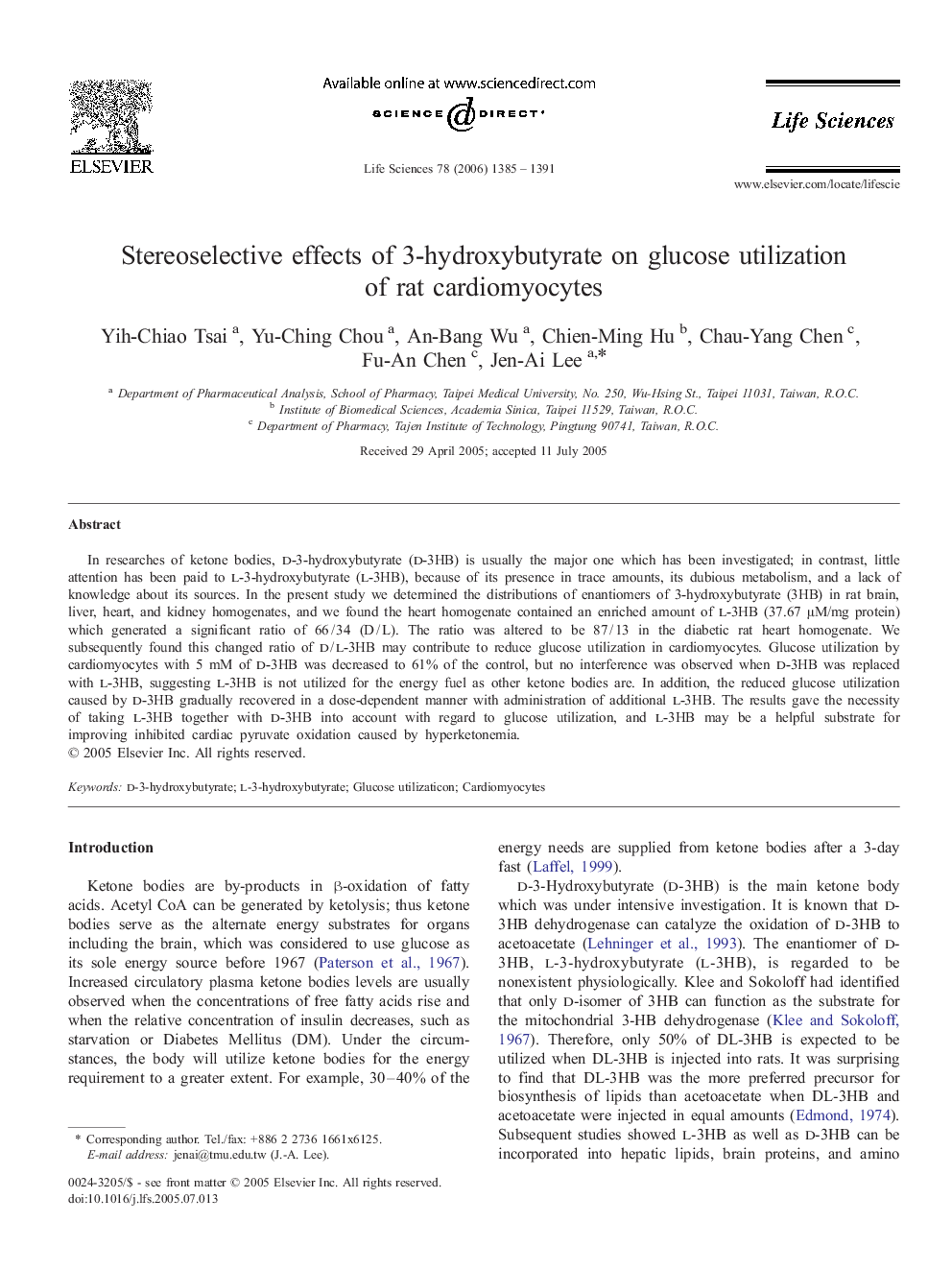| Article ID | Journal | Published Year | Pages | File Type |
|---|---|---|---|---|
| 2554388 | Life Sciences | 2006 | 7 Pages |
In researches of ketone bodies, d-3-hydroxybutyrate (d-3HB) is usually the major one which has been investigated; in contrast, little attention has been paid to l-3-hydroxybutyrate (l-3HB), because of its presence in trace amounts, its dubious metabolism, and a lack of knowledge about its sources. In the present study we determined the distributions of enantiomers of 3-hydroxybutyrate (3HB) in rat brain, liver, heart, and kidney homogenates, and we found the heart homogenate contained an enriched amount of l-3HB (37.67 μM/mg protein) which generated a significant ratio of 66 / 34 (D / L). The ratio was altered to be 87 / 13 in the diabetic rat heart homogenate. We subsequently found this changed ratio of d / l-3HB may contribute to reduce glucose utilization in cardiomyocytes. Glucose utilization by cardiomyocytes with 5 mM of d-3HB was decreased to 61% of the control, but no interference was observed when d-3HB was replaced with l-3HB, suggesting l-3HB is not utilized for the energy fuel as other ketone bodies are. In addition, the reduced glucose utilization caused by d-3HB gradually recovered in a dose-dependent manner with administration of additional l-3HB. The results gave the necessity of taking l-3HB together with d-3HB into account with regard to glucose utilization, and l-3HB may be a helpful substrate for improving inhibited cardiac pyruvate oxidation caused by hyperketonemia.
